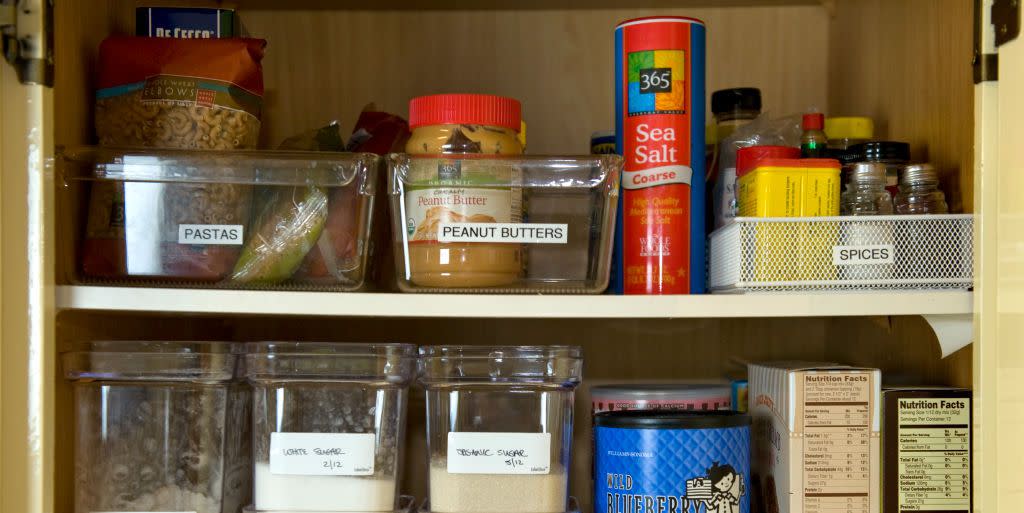Here's Everything You Need To Know About Rationing Your Food

The news around the COVID-19 outbreak is constantly changing, but information about food safety and how to keep yourself healthy is crucial right now. Here is a comprehensive list on the foods you should be stocking up on during this period of social distancing, as well as information about your local grocery stores’ changing hours, an explanation of “no-contact delivery,” and a guide on how to help your community and its businesses throughout closures.
Everyone is stocking up on food before they head into self-quarantine and practicing social distancing to fight the spread of COVID-19 (ideally, you've been doing these things for awhile now!). Whether it becomes necessary to start rationing food or not, doing so can help lower grocery runs that put you at risk of becoming infected. It’s a smart move, and it's always a good skill to have for now and the future.
Grocery and pharmacy stores have already practiced a bit of rationing by placing limits on the number of items customers can buy of certain products (like toilet paper). It’s not necessary to hoard items as grocery stores will likely remain open over the coming weeks with varying adjustments to their hours. By no means do you need to clear an entire aisle, but the Centers for Disease Control and Prevention recommends having enough food in your home to last for two weeks. Planning how to make your food supply last for that long–and how to make the most of it in general–will help you maximize your self-quarantine efforts during this pandemic.
Below, we have a few guidelines for how to go about rationing your food supply. If we all practice a little rationing during this time, we’ll all be better off.
First, how much food do you have?
If you’re fresh off a grocery run, take stock of what you have. Don’t wait until the last minute to start rationing it. Look at what you have and categorize everything into groups–like perishables, canned goods, grains, and frozen food. This will help determine what you need to eat first (perishables) and what you can leave for later (canned and packaged goods). If you’re planning a grocery trip, come up with an idea of how much food will last you two weeks beforehand. Since grocery stores are still operating, you can take a trial and error approach to this.
How many people are you rationing for?
This is important to keep in mind before you head to the grocery store and when you’re planning your meals out. Is it just you and your dog, or are you feeding a whole family? Determining how much food each person will need is where the math comes in. Needs differ based on age, gender, weight, and activity level. Luckily, we have the internet to help us out with this. Calorie calculators can give you an estimate of what each person should intake each day.
In extreme circumstances, healthy people who lower their activity can survive on half of their usual food intake for an extended period of time, according to the Federal Emergency Management Agency. It’s important to note that food can’t safely be rationed this way for children and pregnant women.
When you know how many calories everyone needs to intake, you’ll have to figure out how many calories each food item can give them. Obviously, packaged goods will have that right on the label for you. If something isn't labeled, give it a quick Google search and you'll be set.
As you plan the amount of calories each person needs, make sure you craft balanced diets as best you can. Pasta for every meal isn’t exactly the healthiest, so try to include protein, fruits, veggies, dairy, and grains.
How long will you need your food supply to last?
As previously mentioned, grocery stores are still open and it's good to have two week's worth of food on hand. But if you want to leave your house less, try to make the most of your supply.
You Might Also Like

